New exhibition opens | Feel the world's top art works and experience the visual feast in an immersive way
ÈÕÆÚ£º09-25-2023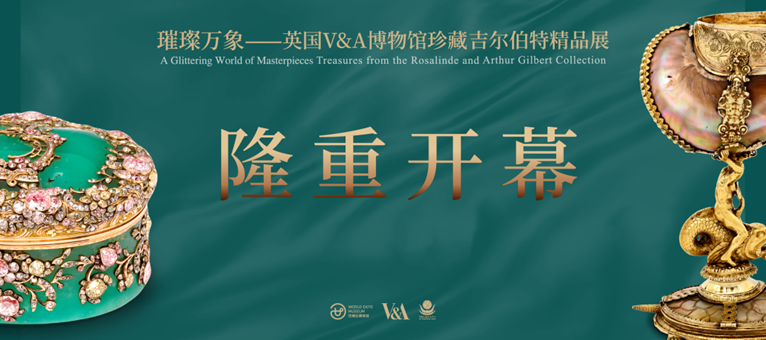
On the afternoon of September 25, 2023, the opening ceremony of "A Glittering World of Masterpieces Treasures from the Rosalinda and Arthur Gilbert Collection " was held grandly at the World Expo Museum. The exhibition is co-organized by the World Expo Museum and the Victoria and Albert Museum (V&A) in the United Kingdom, with the Art Exhibitions China as a supporting unit.

Tan Ping, Director of Art Exhibitions China, delivered a speech
Tan Ping, director of the Art Exhibitions China, said in his opening speech that looking back on the history of the establishment of the Victoria and Albert Museum in the United Kingdom, it began with the collection of exhibits from the first World Expo in 1851. This not only destined the two museums in Shanghai more than 170 years later. The fate of the encounter further confirmed that China and the UK share the same philosophy and common pursuit of inheriting the legacy of the World Expo and carrying forward the spirit of the World Expo. Today, the final tour started at the Shanghai World Expo Museum, marking a perfect conclusion to his trip to China.
Hang Lichuan, Director of the V&A Museum, mentioned in his video speech that Rosalind and Arthur Gilbert collected some of the most beautiful handicrafts in history, many of which were made of precious materials and were often miniature works. This exhibition showcases a number of miniature works of art with extraordinary craftsmanship. It is hoped that this exhibition will create conditions for future cooperation between the V&A, the Art Exhibitions China and the World Expo Museum.
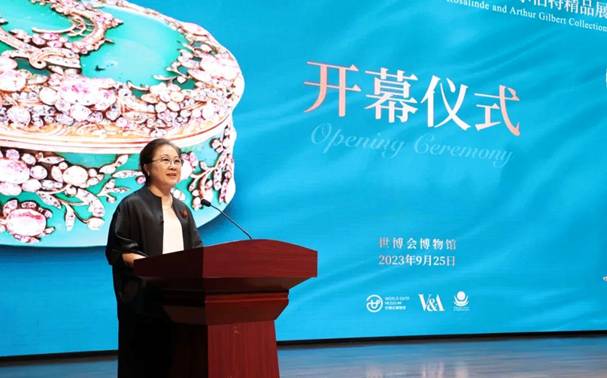
Liu Wentao, Director of the World Expo Museum, delivered a speech
Liu Wentao, Director of the World Expo Museum, mentioned in her opening speech that the World Expo Museum should actively fulfill its mission of inheriting the World Expo legacy, continuing the World Expo effect, and promoting the development of the World Expo, carry forward the World Expo spirit of understanding, communication, gathering and cooperation, continuously improve the quality of serving the public. At the same time, we will introduce more exhibitions that reflect exchanges and mutual learning between different civilizations, so that the cultural complex of the World Expo will be more vibrant.
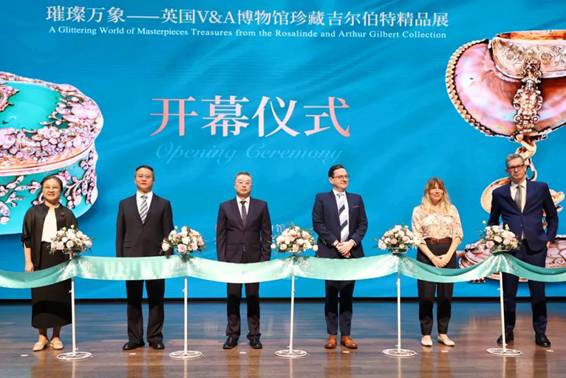
Unveiling and cutting ribbon
Then, the guests cut the ribbon to unveil the exhibition, and the "A Glittering World of Masterpieces Treasures from the Rosalinda and Arthur Gilbert Collection " officially opened.
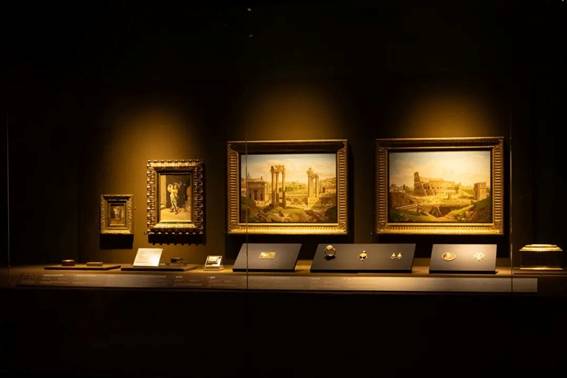
Curator Sun Yi introduces the exhibition
Meet Again
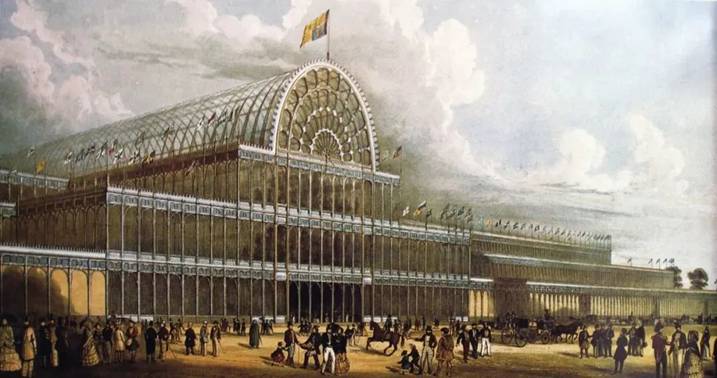
The Victoria and Albert Museum (V&A) in the United Kingdom has its origins in the first World Expo, the Great Exhibition of 1851 held in London.
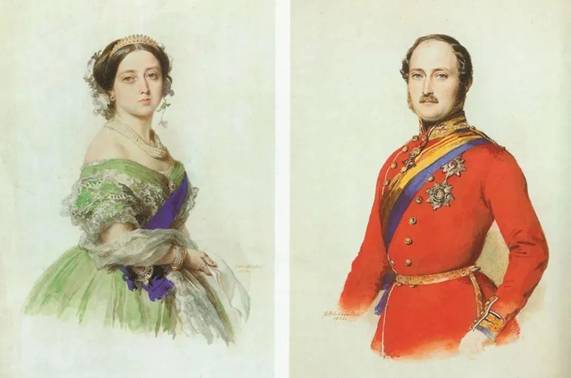
Following the magnificent success of the Exhibition, Prince Albert, the husband of Queen Victoria and one of the initiators of the Exhibition, suggested using the surplus from the event to buy some of its exhibits and a piece of land in the South Kensington of London. The land was resevered for the establishment of educational institutions in culture and scinence. The V&A Museum, with its foundational collection based on exhibits from the Great Exhibition of 1851, was one of these institutions. It was initially named the ¡°Museum of Manufactures¡±, and later renamed the ¡°Victoria and Albert Museum¡± to commemorate the contributions of Queen Victoria and Prince Albert to the first World Expo and the museum.
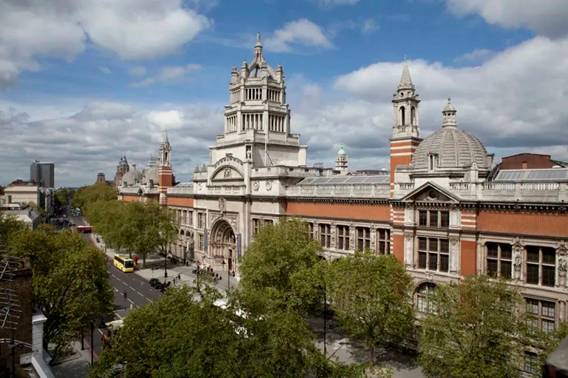
Today, the V&A is the world¡¯s largest museum of decorative arts and design, with a permanent collection of over 2.8 million items.

Rosalinde and Arthur Gilbert were world-renowned for their splendid collection of exquisitely crafted gold,silver and other decorative arts. They established one of the most comprehensive private collections of 20th-century European decorative arts.
This exhibition will showcase artworks which were all collected by Rosalinde and Arthur Gilbert and donated to the V&A Museum.
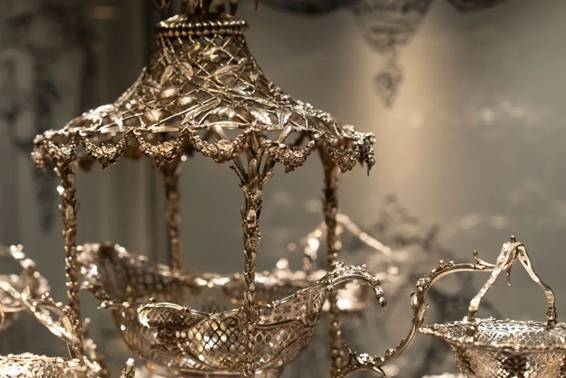
Epergne(Part)
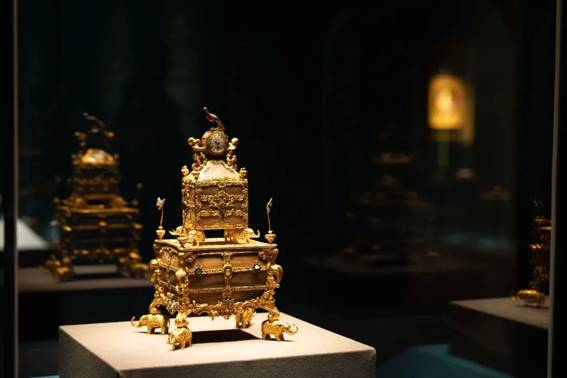
Jewelled necessaire with seven-bell carillon
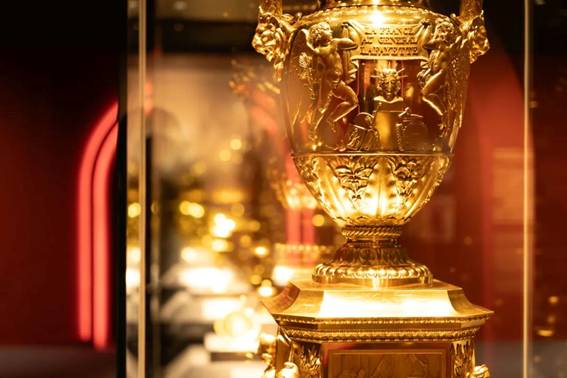
The Lafayette Vase(Part)
When the Gilbert boutique exhibition collected by the V&A Museum traveled across thousands of mountains and rivers to be displayed in the only official World Expo museum in the world, it seemed that two museums with deep roots in the World Expo were joining forces to pay tribute to the audience through a 170-year time tunnel.
Ninety pieces of exhibits

"A Glittering World of Masterpieces Treasures from the Rosalinda and Arthur Gilbert Collection " will be held at the World Expo Museum from September 26 to December 24, 2023, with a total of 90 exhibits on display.
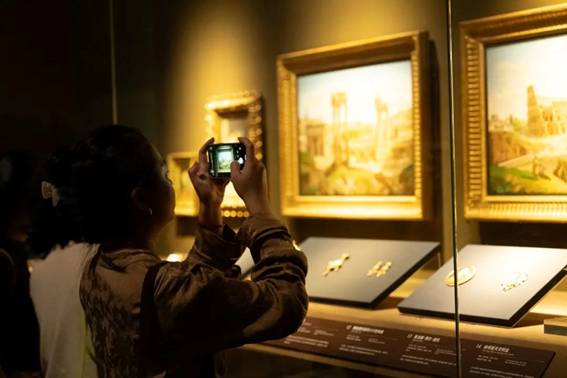
The collection introduced in this exhibition is an important series of collections in the field of European decorative arts, including gold and silver products, snuff boxes, enamel portraits, miniature mosaics and other artworks.
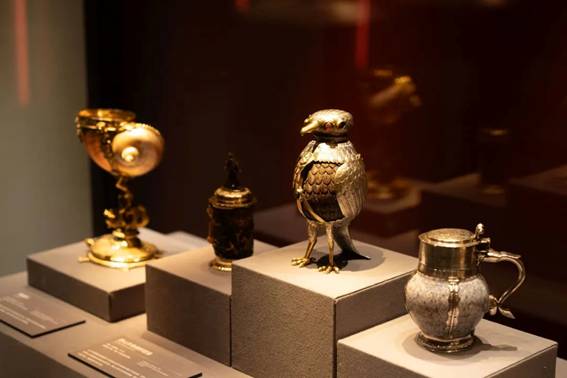
Artworks in gold and silver symbolized prosperity, influence and social standing. Until the early 19th century, these dazzling and splendid treasures held a significant position in Europe. They were regarded as symbols of alliances between nations, rewards for military or diplomatic achievements, religious ceremonial items, or memorabilia for significant events such as weddings.
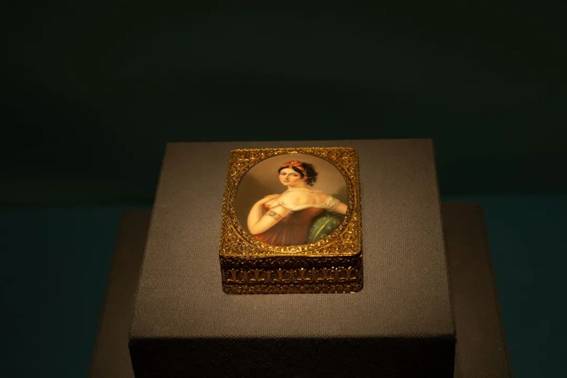
Snuffbox with Elizabeth
Enamel portraits are often used as diplomatic gifts due to their excellent craftsmanship and high cost. This tradition began with King Louis XIV of France. During his reign, he often made enamel portraits of his own image as gifts to envoys and ministers from various countries. This kind of gift was quickly accepted and imitated by European countries. Later, miniature portraits began to appear on snuff boxes. Snuff boxes made of different materials are used as diplomatic gifts in different diplomatic occasions.
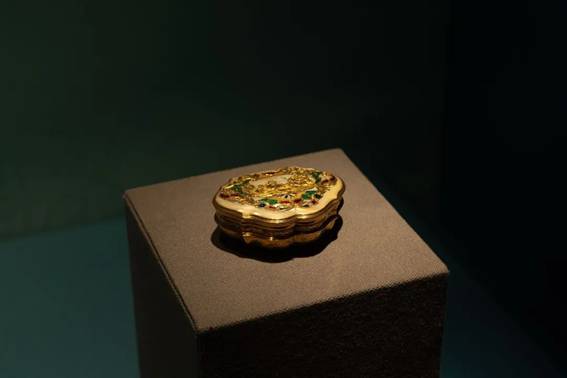
A gold and mother-of-pearl snuffbox
In the 18th century, the pursuit of luxurious and exquisite snuff boxes began to become a trend in Paris. From the beginning, only gold was used as part of the decoration to the entire utensil made of pure gold. Goldsmiths pioneered various new techniques when making snuff boxes, such as gold polishing, engraving, painting and openwork decoration.

Pliny's white dove£¨micro-mosaic£©
The two art forms of micro-mosaic and jade mosaic first appeared in Italy. The advantage is that pictures painted on glass or jade can be preserved permanently.
Five hundred years of history
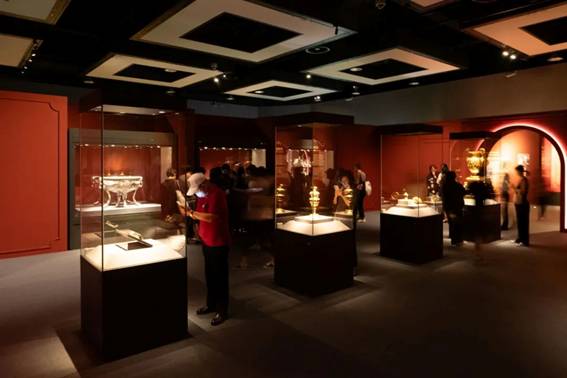
The exhibition interprets the evolution of European courts and Western art from three aspects:" European banquets"," Miniature masterpieces" and " Artistic fantasies ", explores the exquisiteness of European craftsmanship from the 16th to the 20th century, and appreciates the ultimate pursuit of ingenuity and exquisite aesthetics Interesting.
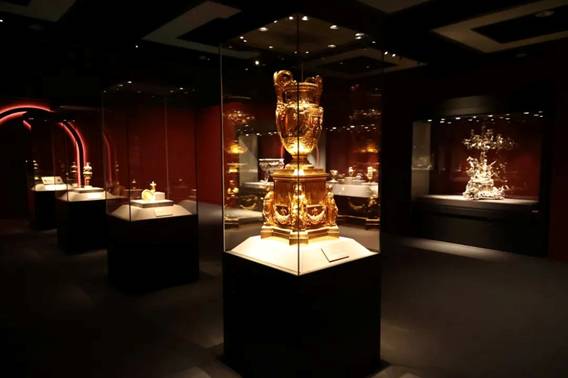
" European banquets"
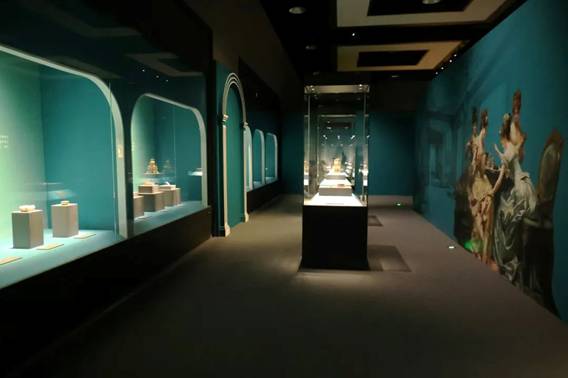
" Miniature masterpieces"
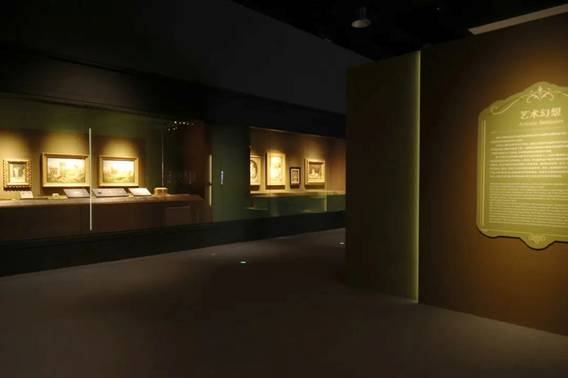
" Artistic fantasies "
Among them, some exhibits have strong Chinese elements, reflecting the epitome of China's foreign trade on the Maritime Silk Road in ancient times and confirming China's pace of connecting the world.
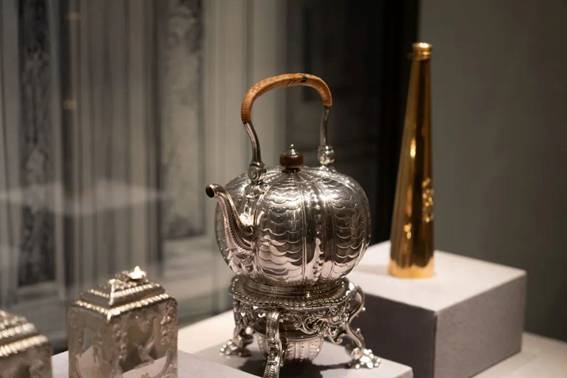
teapot Eight key exhibits
vening dress with chinoiserie scene
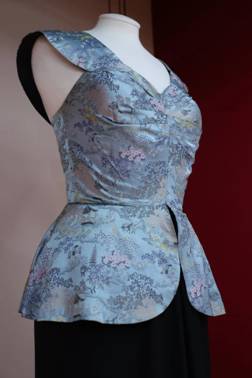
The design of this dress changes the conservative wartime clothing style, striving to show the elegance of women with soft shoulders and slender waist. It uses exquisite and gorgeous Chinese brocade and is decorated with Chinese elements such as pagodas, pavilions and sedan chairs.
Shell cup
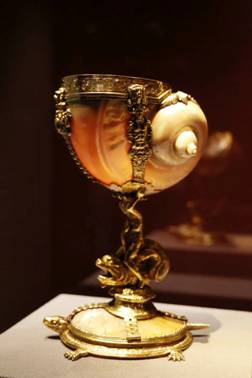
The shell used in the cup comes from waters near Australia and the East Indies. The shell of the conch is polished and then coated with gold and silver to make an exquisite conch cup, which is a rare collection in treasure houses across Europe.
Epergn
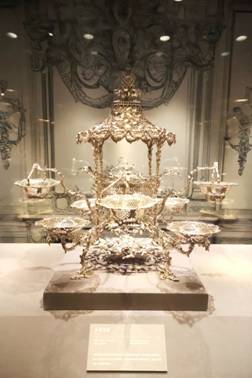
The Epergn is the most eye-catching and iconic tableware in the 18th century silverware tableware. It is used to serve fruits and sweets. The surrounding small tray can also be used alternately as a candle holder. This object is in the shape of a Chinese pagoda, with a pineapple on the top, which is a symbol of wealth.
Testimonial presented to George Hay

This type of commemorative commemoration embodies the highest aesthetic taste for commemorative display devices during the British Victorian era. Testimonial presented to George Hay was exhibited at the first World Expo in 1851. It is huge, weighing about 38 kilograms, and consists of 13 branched candlesticks.
The Beautiful Sky of Italy
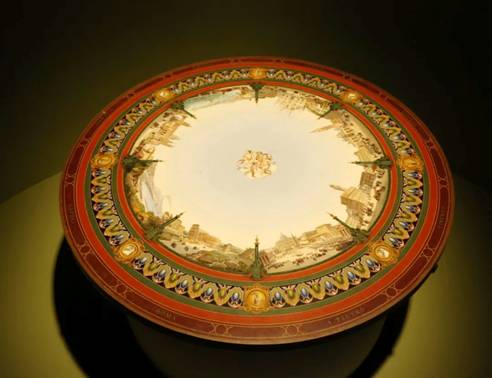
This work was produced by mosaic artist Michelangelo Barberi and depicts the early days of eight famous tourist attractions in Italy. Named " The Beautiful Sky of Italy", this work was exhibited at the first World Expo in 1851 and won the highest honor.
The Frederick the Great snuffbox
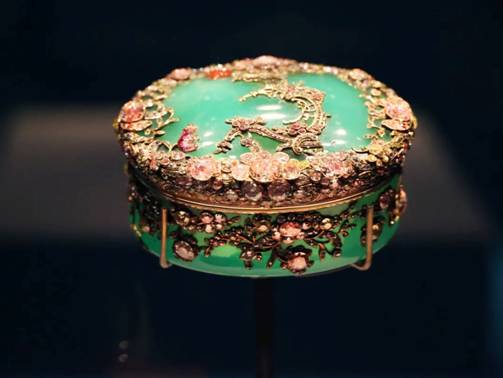
King Frederick II of Prussia was particularly fond of snuff boxes. It is said that he collected more than 300 snuff boxes. It is possible that he ordered the production of this snuff box and was directly involved in its design. This piece is larger in size, made of chrysoprase from the king's collection, and set with diamonds.
Presentation snuffbox of Queen Victoria
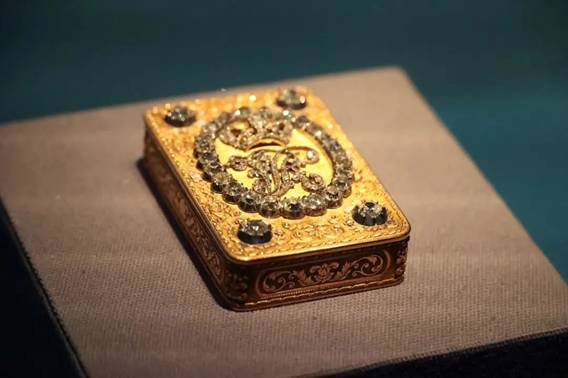
Queen Victoria lived in Kensington Palace before she succeeded to the throne. Colonel Francis Venables-Vernon Harcourt made outstanding contributions as a chamberlain during this period. The Queen gave this snuff box to the Colonel as a recognition. This is also one of the first gifts given by the Queen after she ascended the throne.
Presentation snuffbox of Napoleon I
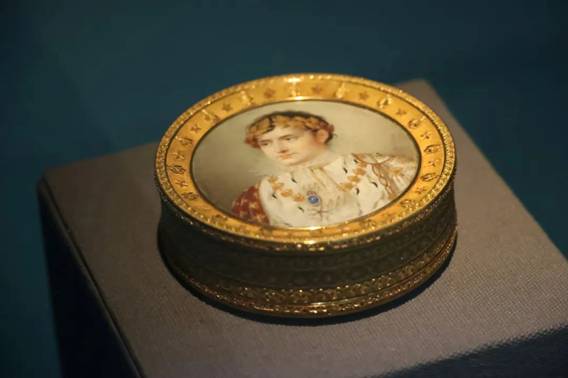
Napoleon Bonaparte was an avid snuff lover, and he revived the French tradition of using snuff boxes as diplomatic gifts. From simple tortoise shell snuff boxes to luxurious gold snuff boxes, he established a strict hierarchy and financial budget for these snuff boxes.
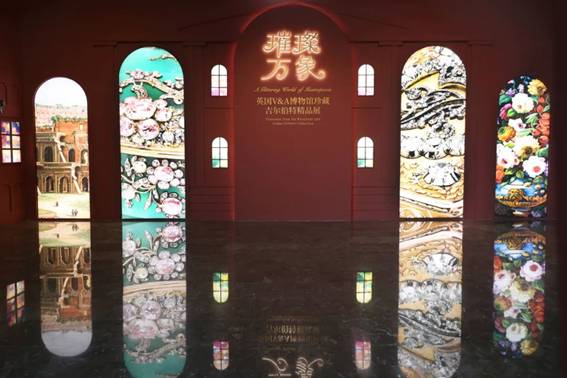
¡¡¡¡A Glittering World of Masterpieces Treasures from the Rosalinda and Arthur Gilbert Collection
¡¡¡¡Curator: Sun Yi
¡¡¡¡Exhibition period: September 26th - December 24th
¡¡¡¡Location: Exhibition Hall 1 of World Expo Museum
¡¡¡¡Ticket price: free